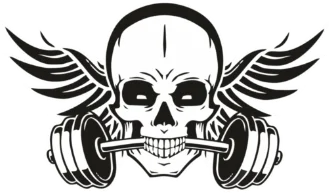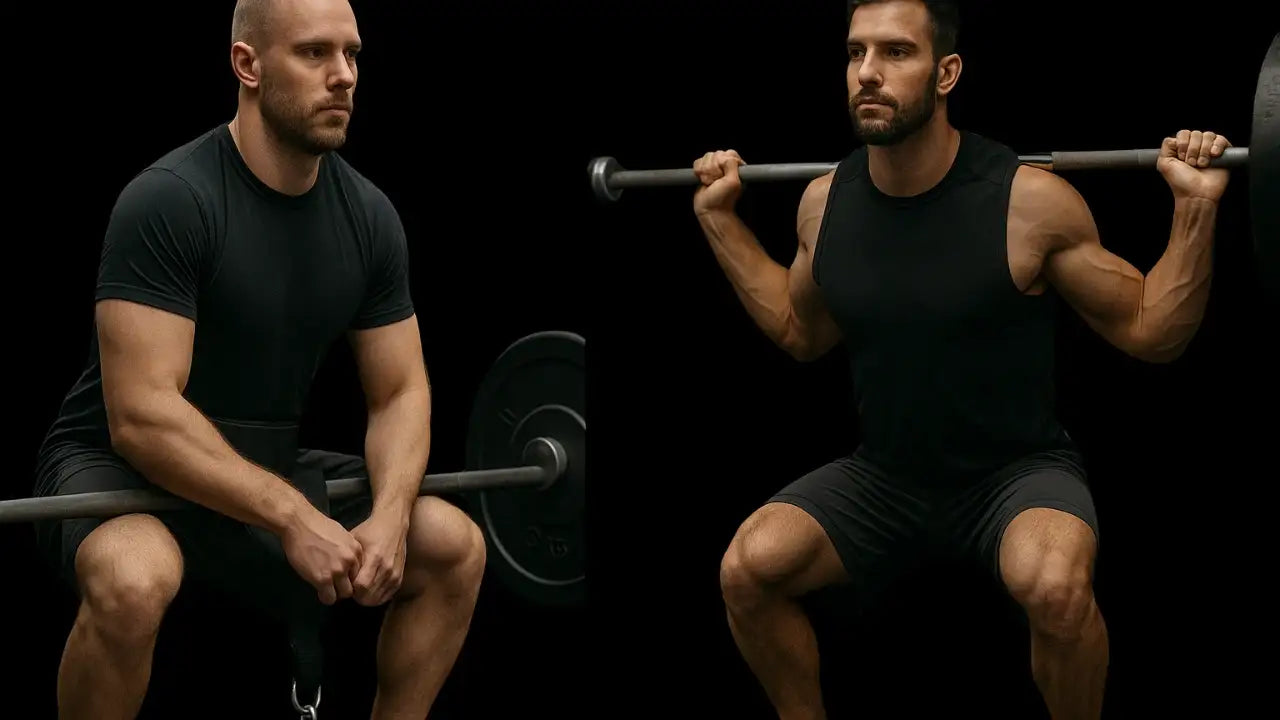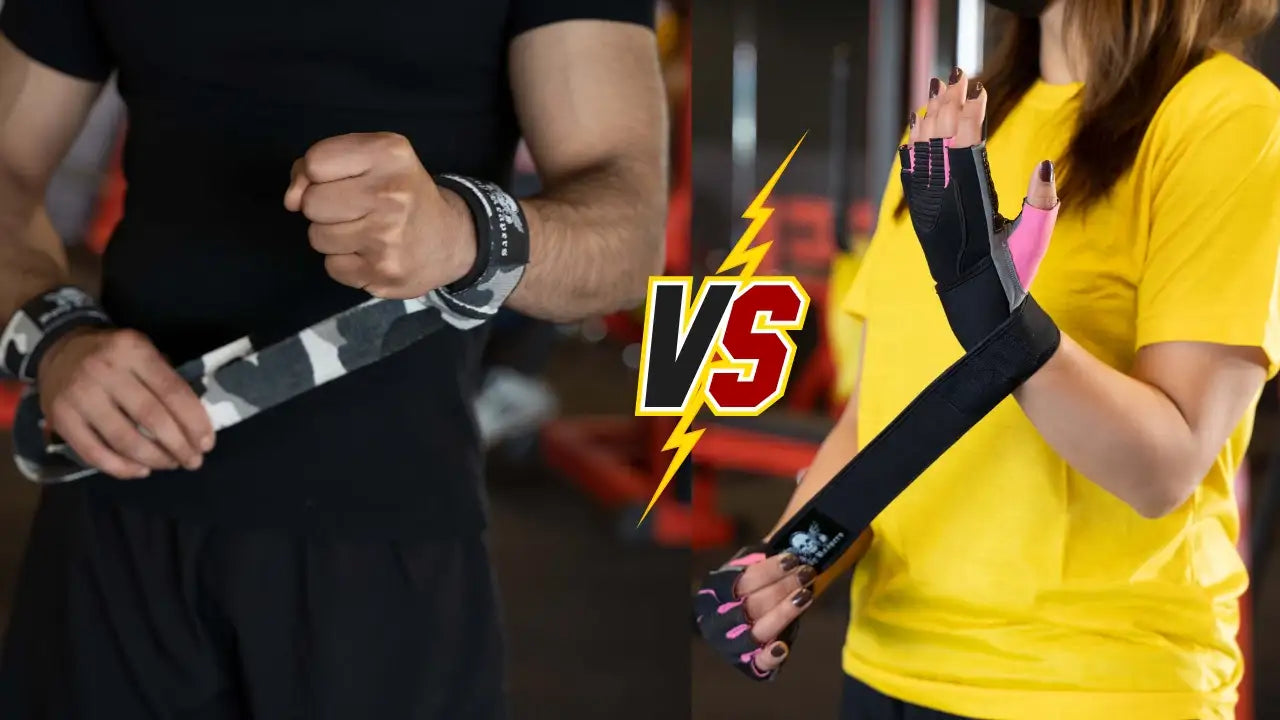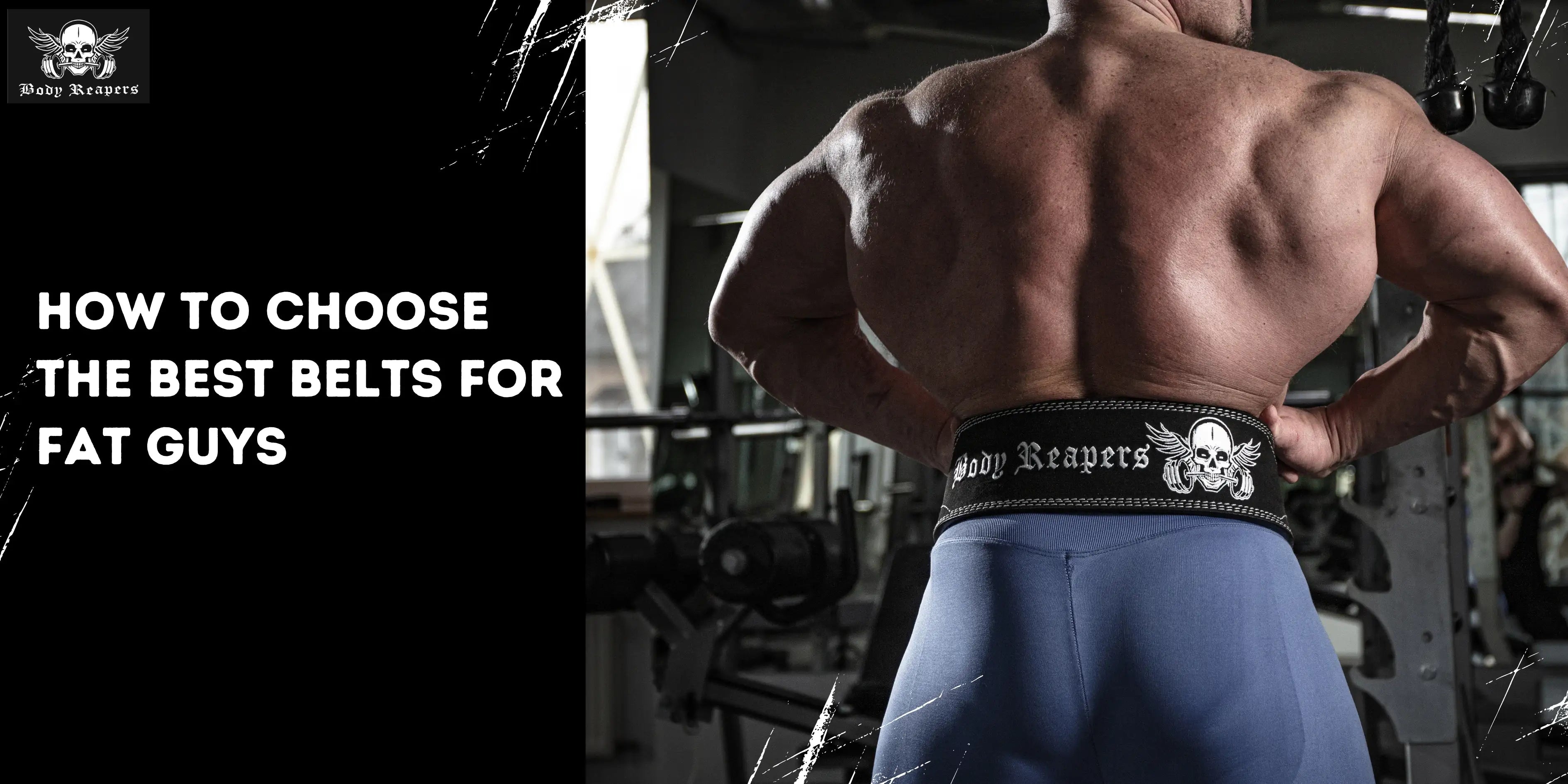Walk into any gym, and you’ll hear lifters debating the belt squat vs back squat. Both are excellent tools for building leg strength, but they challenge your body in very different ways. The back squat has stood the test of time as one of the best strength builders. The belt squat, on the other hand, is a spine-friendly alternative that allows heavy leg training without loading the upper body.
So, which one should you do? Let’s break down both movements, weigh the pros and cons, and look at the key differences to help you decide which belongs in your program.
What Is a Back Squat?
The back squat is one of the most fundamental lifts in strength training. A barbell rests across your upper back and shoulders as you descend into a squat. You then drive through the floor to stand tall again.
Targeted muscles: quadriceps, hamstrings, gluteals, spinal erectors, and core
This is what keeps it a main lift in powerlifting, bodybuilding, and athletic performance programming, because it is a compound lift that challenges several muscle groups simultaneously.
One of the best things about belt squats is how safe they feel, but the right gear makes them even better. The Body Reapers Weight Lifting Leather Belt is built to keep you stable and comfortable, so you can focus on your legs instead of your lower back.
Pros of the Back Squat
1- Full-Body Muscle Engagement
The back squat trains more than just the legs. It works the entire posterior chain, core, and stabilizers, making it one of the most efficient strength-building movements.
2- Superior Strength Development
This lift develops raw power. Loading the spine and posterior chain builds explosive athletic ability and maximum strength.
3- Versatility in Training
From high-bar to low-bar to pause squats, you can modify the movement to emphasize different muscle groups or goals.
Cons of the Back Squat
1- High Spinal Load
The weight of heavy barbells resting on the back creates compression on the spine, which can aggravate existing problems or cause issues when form fails.
2- Greater Risk of Injury
Poor form, such as rounding the back or allowing the knees to cave in under load, can result in injuries to the lower back, hips, or sometimes knees in the blink of an eye.
3- Mobility Demands
This exercise demands a range of motion through the ankles, hips, and shoulders. Limited flexibility is the main reason why beginners fail to squat deep or fit the bar comfortably into the back.
Heavy squats stress your back and knees. Body Reapers Belts and Sleeves keep you safe and confident.
What Is a Belt Squat?
The belt squat is a lower-body exercise performed with resistance attached to a belt around your hips. This setup shifts the load directly onto your legs and removes it from your spine and shoulders.
Muscles worked: mainly quads and glutes, with far less demand on the back and core.
It’s a popular choice for lifters rehabbing injuries, athletes chasing quad growth, or anyone who wants to push leg volume without stressing the upper body.
Pros of the Belt Squat
1- Spine-Friendly Training
The spine is decompressed as the weight tensions right at the hips. That's why the belt squat is a great choice to use with a lifter who has back pain or while rehabbing an injury.
2- Quad-Focused Hypertrophy
The belt squat isolates the legs, especially the quads, without relying on upper body stability. This makes it one of the best hypertrophy tools for leg development.
3- Joint-Friendly Movement
Lighten up the load on your wrists, elbows, and shoulders with the No bar on the shoulders option. It allows you to train hard without stressing the smaller joints.
Related Article: Leg Press vs Squat: Which is Better for Strength Training?
Cons of the Belt Squat
1- Limited Equipment Availability
Not all gyms have a belt squat machine. There are many DIY setups for this, but they rarely operate as smoothly as the correct equipment.
2- Less Core and Trunk Activation
The belt squat does not require a lot of core or spinal erector strength like the back squat. A point of contention is that this gap could arise from relying solely on the belt squat.
3- Reduced Carryover for Powerlifting
Belt squats are awesome for leg growth, but they are not quite similar to the competition version of a squat. For max carryover, powerlifters still need back squats.
Key Differences Between Belt Squat and Back Squat
1-Muscle Activation
Barbell Back Squat: Primarily works quads, glutes, hamstrings, erectors, and core
Belt squat: your main working muscles will be your quads and glutes, but frankly, because your trunk works so tightly, there is not much engagement here.
2-Spinal Load
Back squat: lots of spinal compression
Belt-squat: eliminates compression on the spine
3-Strength vs Hypertrophy
Back squat: best for raw strength + athletic carryover
Belt squat: Very effective for hypertrophy, especially quads.
4- Accessibility
Back squat: only requires a barbell and a rack.
Belt squat: needs a machine or creative setup.
Which One Should You Choose?
Strength athletes: Look, it's not up for debate, if you want to compete in strength, then back squats are your bread and butter.
Bodybuilders: Use both, back squats for overall size, belt squats for quad detail.
Injured lifters: Belt squats allow you to pound your legs without beating up your back.
Beginners: Belt squats provide a safe introduction before progressing to back squats.
Conclusion
The belt squat vs back squat debate isn’t about which exercise is universally “better.” Both are powerful tools, but they have different use cases. Back squat delivers the most total strength as well as athletic transfer, while belt squat allows you to develop your legs in the safest, least joint-pounding way possible.
Smart lifters do not choose one over the other; they use both. Back squats build raw strength. Belt squats add volume safely. Combined, they offer a nice balance for leg training.
Train smarter and lift stronger with Body Reapers Belts. Built to protect your back and stabilize your lifts, they’re the ultimate gear for lifters serious about progress.





Leave a comment
This site is protected by hCaptcha and the hCaptcha Privacy Policy and Terms of Service apply.